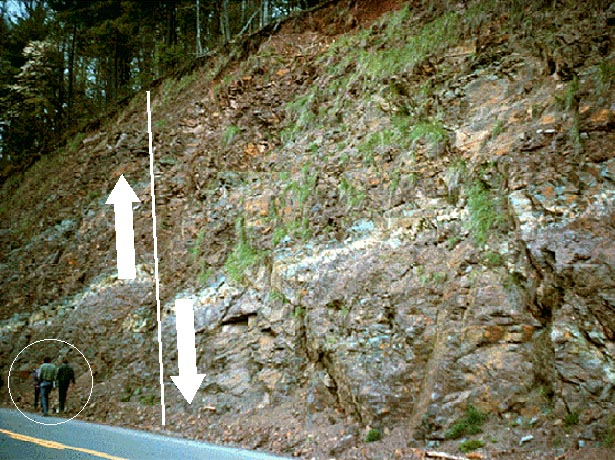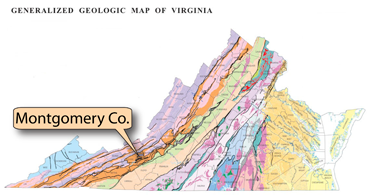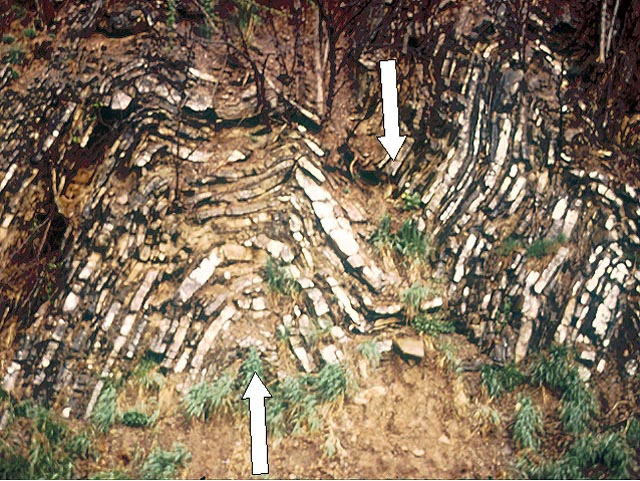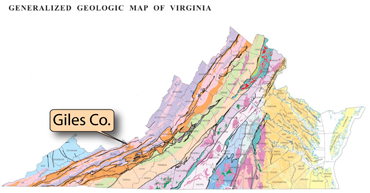
Forces
Understanding the formation of geologic structures in the earth’s crust begins the ideas of stress and strain.
• Stresses are forces that deform rocks. They are measured as a force per unit area, or pounds per square inch, for example. The force on a rock from overlying material is a stress.
• Strains are changes in the volumes or shapes of rocks resulting from stress. The amount a rock has been flattened because of the weight of overlying rocks is a strain.
• There are several types of stress that deform rocks.
• Tension is the stress on rocks that are being pulled apart. A normal fault is an example of a structure typically caused by tension.

Normal Fault (Photograph by Robert Whisonant)
 This normal fault (line) cuts Mississippian rocks in the Valley and Ridge in Montgomery County. Notice the displacement indicated by the light-colored layer. Normal faults are caused by tension. Note people (circle) for scale.
This normal fault (line) cuts Mississippian rocks in the Valley and Ridge in Montgomery County. Notice the displacement indicated by the light-colored layer. Normal faults are caused by tension. Note people (circle) for scale.
• Compression pushes rocks together. Anticlines and synclines are examples of structures caused by compression.

Folds: anticline on left and syncline on right (Photograph by Robert Whisonant)
 Folds like these form from compression. This anticline (up-fold) and syncline (down-fold) are in limestones in the Valley and Ridge of Giles County.
Folds like these form from compression. This anticline (up-fold) and syncline (down-fold) are in limestones in the Valley and Ridge of Giles County.
• Lateral shear stress pushes rocks horizontally past each other in two opposite directions. A strike-slip fault is an example of a structure formed by lateral shear stress.